10 Best Tourist Places in KhurdaThe lovely Khurda district is a hidden treasure waiting to be discovered by adventurous visitors. It is located in the gorgeous Indian state of Odisha. For those looking for an adventure off the main road, Khurda provides a fantastic experience because of its rich history, vibrant culture, and stunning surroundings. Visitors may travel back in time by visiting the many historical sites in Khurda. The well-known Udayagiri and Khandagiri Caves, which date to the first century BCE, serve as a reminder of the area's rich history and are examples of complex rock-cut construction. The ancient remains of Sisupalgarh, a walled city excavated, offer a look into the city's urban layout from many years ago. Khurda offers various holy places for individuals looking for spiritual peace. With its stunning Kalinga-style architecture, the famed Jaleswar Temple, devoted to Lord Baladevjew, draws both worshippers and architecture enthusiasts. The Pipli hamlet, renowned for its vibrant appliqu� work and handicrafts, also provides a rich cultural experience. The natural marvels of Khurda will capture the attention of nature lovers. A unique environment is supported by the Chilika Lake, Asia's most giant brackish water lagoon and a sanctuary for migrating birds. Visitors may go on boat trips, see breathtaking sunsets, and observe how the villagers still fish traditionally. Shopaholics and culinary lovers can visit the district's lively markets and busy streets. Khurda's marketplaces provide a real sense of Odisha's rich past, showcasing everything from complex handicrafts to mouthwatering regional specialties. Travelers who venture into Khurda will have the opportunity to experience the fusion of history, spirituality, and natural beauty, leaving them with an imprint on their hearts that will last a lifetime. Let us have a look at top tourist places in and near Khurda; 1. Udayagiri and Khandagiri CavesThe Kalinga Empire, ruled by the Jain ruler Kharvela, is remembered at the Khandagiri and Udayagiri Caves. The two hills are adored by around 40 rock-cut caves divided by a road. The Jain faith's founder, Mahavir, is said to have traveled to Udayagiri and Khandagiri in the sixth century b.c. The dancing culture in Orissa dates back to the 2nd century B.C., according to contemporary researchers Rani and Hati Gumpha in the Udayagiri. 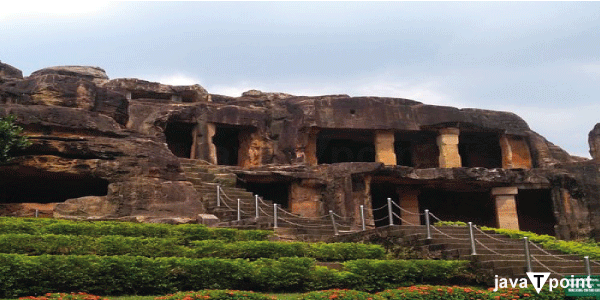
The Udayagiri cave complex, according to contemporary experts, may have had a theatrical complex. Emperor Kharvela was a devoted and outstanding supporter of culture. To host Jain ascetics and cultural performances, he built the caverns. The caves may be found in the Hathigumpha inscription Kumari Parvata on the adjacent hills of Udayagiri and Khandagiri. They have a number of tunnels that include exquisite sculptures from the first century BCE. During King Kharavela's reign, Jain monks lived in most of these tunnels. While Udayagiri, which means "Sunrise Hill," includes 18 caves, Khandagiri only has 15. The caverns of Udayagiri and Khandagiri, known in the inscriptions as lena or lea, were excavated mainly for use as the homes of Jain ascetics during the reign of Kharavela. 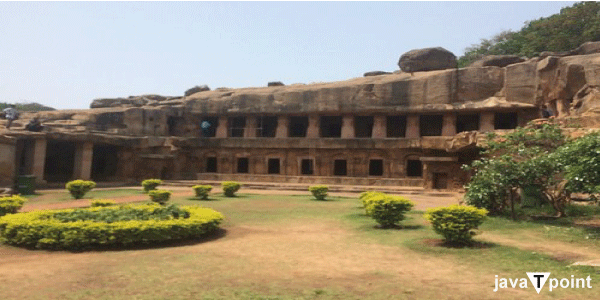
The most significant member of this type was the double-story monastery Ranigumpha at Udayagiri. More noteworthy caves are Hathi Gumpha, Ananta Gumpha, Ganesha Gumpha, Jaya Vijaya Gumpha, Mancapuri Gumpha, Bagha/Byaghra/Vyaghra Gumpha, and Sarpa Gumpha. The Archaeological Survey of India (ASI) has included Udayagiri and Khandagiri Caves to its list of "Must Visit" Indian Heritage locations. ASI regards the Udayagiri and Khandagiri Cavesnearby as Adarsh Smarak Monuments. 2. SisupalgarhDating exclusively The archaeological ruins of Sisupalgarh (also known as Sisupalagada), which date back to the 7th century B.C., even before the Mauryan Empire, are regarded as one of the most extensive and best-preserved ancient fortifications in India. The fortification's remnants were found in 1948 by Indian archaeologist B.B. Lal close to Bhubaneswar. Using excavation data, Lal calculated that the fort city thrived from the third century B.C. and the fourth century A.D. 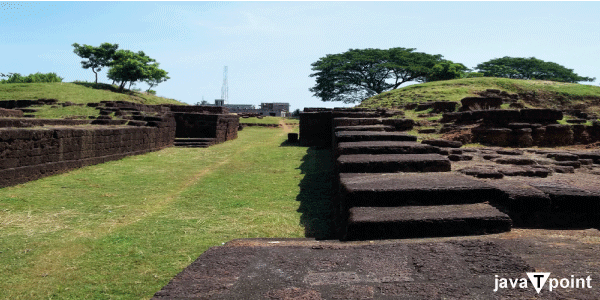
Sisupalgarh was planned and built as a perfect square with walls for protection. The interior is filled with stone sculptures and ruins stretching for more than half a mile on either side. The fortification's walls rise to just over nine meters (30 feet). Eight entrances to the city existed, two on each of the wall's four sides. The gates were ornate brick and stone constructions. There is proof of reservoirs with stone walls that were probably used to collect rainwater. 3. Deras DamApproximately 20 kilometers from Bhubaneswar, the Deras Dam is one of Odisha's biggest dams. The dam's primary water source is rainwater, and it was built in 1967 as a water reservoir. The major reason this dam was built was for irrigation. However, some of the dam's canals also provide water to the animals living in the Chandaka Wildlife Sanctuary. The fact that the dam is inside a sanctuary means that the Forest Department controls its access. This dam is a well-liked retreat location for locals and visitors to Bhubaneswar for picnics, mainly in the winter. The view of the sanctuary, dam, and verdant landscape from the hilltops is serene. Because there is so much to shoot here, from animals and hills to the excellent water length of the dam, folks who enjoy photography adore being here. 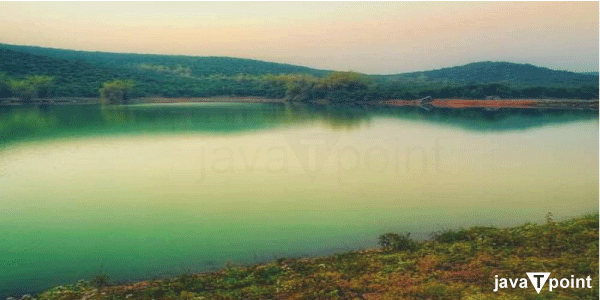
Several cottages on a neighboring hilltop are available for rent to visitors with assistance from the Forest Department Office. Visitors may also have a guided safari inside the Chandaka Wildlife Reserve, about 40 km from the dam. 4. Dhauligiri HillsDespite being around 8 km from Bhubaneswar, Odisha, and situated on the Daya River's bank, Dhauli Giri Hills is regarded as a part of the city and one of its top tourist destinations. These hills, surrounded by lowlands, forests, and the Daya River, have significant historical significance for India and Odisha. Here, the Mauryan Kingdom and the Kalinga Kingdom engaged in the fabled Kalinga Conflict. When the battle was over, Emperor Ashoka was astounded by the extent of the bloodshed and destruction. He decided to follow the Buddhist path here as penance. The Dhauli Giri Hills have played a significant role in Indian history. This is the location of the Kalinga War, one of history's most significant and bloodiest conflicts. It's estimated that more than 2,000 000 men perished in this brutal conflict. 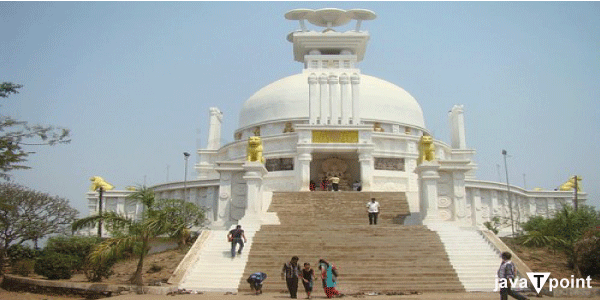
The Daya River has completely turned red due to the scale of the bloodshed. After seeing such significant destruction, corpses, and blood, Emperor Ashoka questioned the reason for war and killing innocent people. Realizing his error, he always vowed to walk the road of peace. He converted to Buddhism and promoted it not just in India but also in other nations throughout Asia. At his request, he produced rock edicts with declarations, messages, and lessons from Ashoka about nonviolence, good behavior, consideration for others, and appropriate behavior. One such location is the base of the Dhauli Giri Hills, where the Ashokan Rock Edicts may be discovered. 5. Satkosia Tiger ReserveThe four towns of Nayagarh, Cuttack, Angul, and Boudh make up the Satkosia Tiger Reserve in the middle of Odisha. This tiger reserve comprises the Satkosia Gorge Sanctuary and the Baisipalli Sanctuary, two nearby sanctuaries. The Forest and Environment Department of the Government of Odisha presently looks for the area, which was proclaimed a wildlife sanctuary in 1976. The Greek words "Sat" (seven) and "Kos" (two miles) are the origin of the name "Satkosia," which may relate to the 14-mile River Mahanadi gorge that runs through this region of biodiversity. Near Satkosia, two bio-geographic regions of India?the Eastern Ghats and the Deccan Peninsula?join, adding to the nation's immense biodiversity. The Satkosia Tiger Reserve is famous for its stunning natural beauty, which draws tourists worldwide. Staying in one of the nature camps allows visitors to the tiger reserve to enjoy the peace and opportunity to observe wild animals in their natural habitat. The Satkosia Tiger Reserve declared a tiger reserve in 2001, has a hilly topography with steep to moderate slopes and minor gorges. 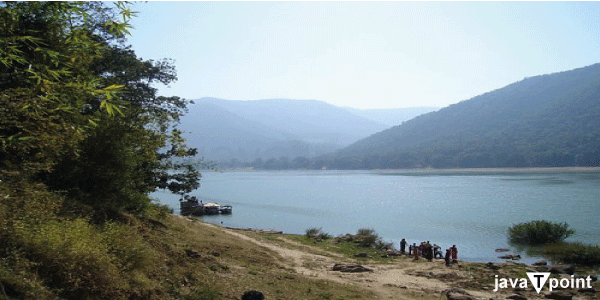
The lowest and highest elevations of the topography, Katrang, and Sunakhania, respectively, have an average elevation that spans from 37 m to 932 m. Its flora includes historic teak plantations, low-lying tropical and humid peninsular woods, and sal trees. In addition to 98 shrubs, 126 trees, 561 climbers, and 125 herb species, the tiger reserve contains these plant species. On the other hand, tigers, sloth bears, sambar, spotted deer, elephants, leopards, giant squirrels, porcupines, barking deer, and chowsingha are only a few of the reserve's many different animal species. The native home of the freshwater crocodile and the gharial, two vulnerable reptile species, is the Satkosia Gorge. It is home to about 38 mammal species, 161 bird species, and over 183 distinct fish species. 6. Bindu SarovarBindu Sarovar, one of the top attractions in Bhubaneshwar, is a sacred lake to the north of the well-known Lingaraj temple. Today, residents and visitors frequently visit this location for sightseeing and leisure. Bhubaneshwar's most significant water body is marked by the server, encircled by the architectural wonder of several temples and shrines. According to legend, Lord Shiva made Bindu Sagar Lake by gathering water from all the holy sites to appease Goddess Parvati's hunger. 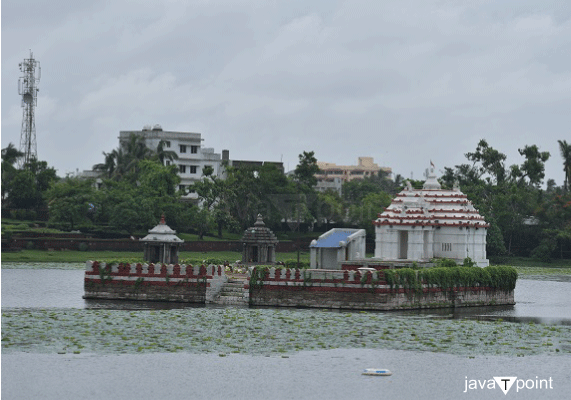
As a result, it is said that bathing in Bindu Sagar Lake would wash away all sins and that drinking holy water would cure all illnesses for believers. Bindu Sagar Lake is a well-liked picnic area since several temples and shrines border it and is in a serene and calm environment. The small island with several shrines in the center of the enormous Bindu Sagar Lake is 1,300 feet long and 700 feet broad. During the yearly Car festival (Ashokastami), Lord Lingaraj (Lord Shiva) traditionally bathes in the lake. The Lingaraja temple's Shivalingam will be transported to the Bindu Sagar Lake on that day for ceremonial washing. 7. Jayadev VatikaOne of Bhubaneswar Smart City's most famous natural attractions is Jaydev Vatika. Visit this location to spend time with someone you naturally admire. Picnics, family get-togethers, and social events with friends work well here. You may pick or rent a site for a picnic with little cost. 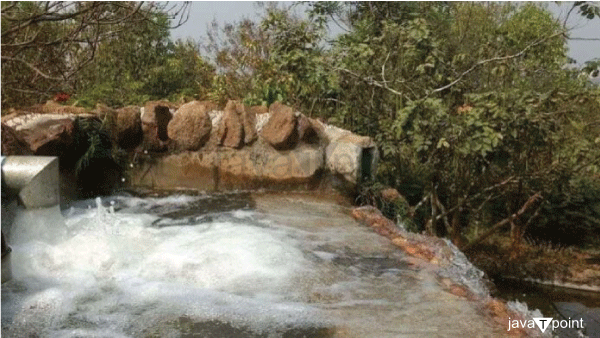
It has been transformed into a lovely landscape park with scenic beauty for the visitor to experience mental serenity and euphoric delight thanks to the addition of the Water Fall, Jaydev Art Gallery, Stream, Fountain, Cabana, Watcher Shed, Rain Shelter, Picnic Spot and Pindi With Roof, Lily Pond, Kids Park, Water Reservoir and Cascading Stream. Picnic Pindis has developed into one of the prime outdoor amusement spots for morning and evening picnickers because of its lavatory and water services. 8. Biju Patnaik ParkOne of the most well-known parks in Bhubaneswar is Biju Patnaik Park. One of its most prestigious neighborhoods, Bapuji Nagar, is where it is located. The park is dedicated to the late Late Shri Bijayananda Patnaik (often known as Biju Patnaik), the former chief minister of Odisha. In the middle of the park, a statue of Shri Patnaik has been constructed in his honor. For residents of Bhubaneswar, the park is the ideal spot to unwind. This area is frequented in the mornings and nights by joggers and fitness lovers. Families and groups of friends like spending nights in the park relaxing and participating in various entertaining activities. The park was first called Forest Park before getting named Biju Patnaik Park. On March 5, 2002, his birthday, a statue of Shri Biju Patnaik was built at the park. 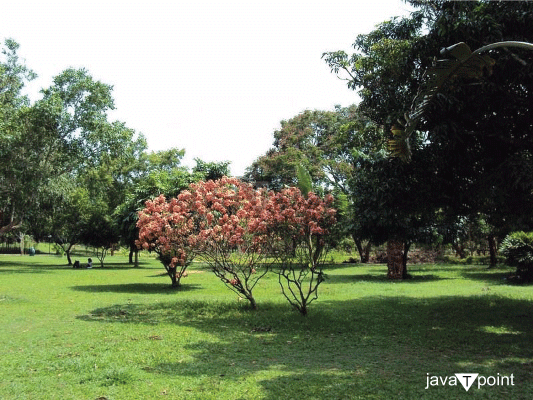
In addition to Shri Ramvilas Paswan, the previous Union Minister for Steel and Mines, Shri Naveen Patnaik, the present Chief Minister of Odisha, also participated in the opening ceremony. Biju Patnaik, one of the most eminent leaders in Odisha, gave priceless state contributions. A politician, a fighter for independence, and a passionate flyer, Shri Patnaik had many talents. His brave deeds are still highly regarded in the state, nationally, and internationally. Given his popularity, not only the Indian flag but also the flags of Indonesia and Russia were placed on his coffin when he died in 1997. This park is a little monument to this extraordinary man. 9. MangalajodiA site to see Mother Nature is Mangalajodi Ecotourism, 40 kilometers from the district headquarters. On the northern shores of Chilika Lake in Odisha, a popular ecotourism destination known as "The Bird's Paradise," more than 3,000,00 birds may be seen in its marshy waters, especially during the winter. A sustainable way of living best represents the safeguarding of this unique habitat. Instead of exploiting ecosystems for quick cash, Mangalajodi Ecotourism aspires to inspire, educate, and empower people to use well-managed low-impact tourism to convert ecosystems into a sustainable source of income. The foundation of the entire endeavor is the conservation of the avifauna and wetland ecology. Not only is this a haven for birds, but it's also Asia's photographer's paradise. During the winter, Mangalajodi is home to more than 200 different bird species. Numerous Ruffs, Godwits, Terns, Plovers, Sandpipers, uncommon Grey-headed Lapwings, Gulls, Pintails, Ruddy Shelducks, Skulkers like the Greater Painted Snipe, Ruddy-breasted Crake, Baillon's Crake, Slaty-breasted Rail, Black-tailed Godwits, Oriental Pratincoles, and Pacific Golden Plovers, etc. 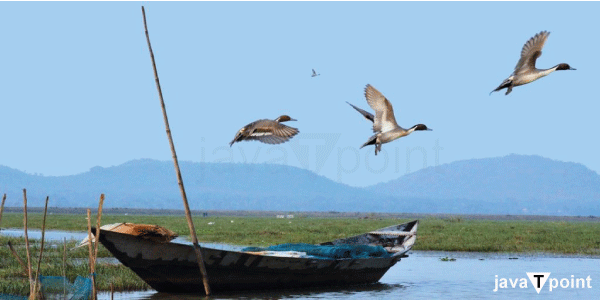
Numerous raptors may be spotted hunting in various areas around Mangalajodi. All around you, there are numerous bird sounds, quacks, chirps, whistles, mimics, and trills that you may hear. Sometimes they sing in the chorus; other times, it's simply verbal interaction. The distance from Khurda Road Railway Station is 30 kilometers. The Southeastern Railway's Howrah-Chennai line's Kalupada Ghat is the closest railhead. Mangalajodi is located off of NH 16, which links Bhubaneswar to Berhampur, around 70 km southwest of Bhubaneswar. It is located in Orissa's Khurda district, around four km southeast of Tangi town. Chandpur is the closest well-known location. Visitors may take an auto to Mangalajodi by getting out at Chandpur Tangi. You might also take a cab from Bhubaneswar. Buses frequently go between Bhubaneswar and Tangi. 10. Nandankanan Zoological ParkIn Orissa, the Nandankanan Zoological Park is 20 km from the state capital Bhubaneswar. India's first captive gharial breeding facility is located at Nandankanan, which is spread throughout the calm and thick Chandaka woods. The most attractive park, whose name translates to "Garden of Pleasure," offers the chance to see unusual flora and wildlife thriving in their most natural setting. The Nandankanan Zoological Park also referred to as Nandankanan National Park, offers a variety of fascinating amenities, including boating, white tiger and lion safaris (safaris in the sense of encountering these majestic animals), a reptile park, an aerial ropeway, and a cable car. The zoological park was built as a nocturnal animal house to help enthusiasts develop a passion for wildlife. This reserve area spans 4.37 sq km, whereas the protected area is 3.62 sq km. 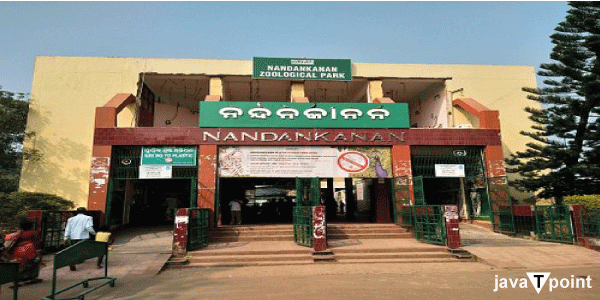
The park has become a popular picnic spot for residents and tourists due to its unique amenities and peaceful surroundings. Visitors to this park, especially kids, have a perennial favorite activity: taking a trip on the toy train while attentively observing the fauna. A fascinating lake and gorgeous, verdant surroundings at Nandankanan Zoological Park make it a virtual haven for migratory and local birds alike. According to the forest service, there are over 75 different bird species in the park, some of which are pretty uncommon. The white peacock, blue and yellow macaw, open-billed stork, green-winged macaw, and other well-known birds may be observed here. ConclusionIn conclusion, Khurda is an alluring location for tourists looking for a genuine Indian experience because of its rich history, cultural legacy, and natural beauty. This area provides a diversified selection of sights that appeal to various interests, from historic temples to tranquil lakes and lush woods. The towering Nandankanan Zoological Park, the serene Udayagiri and Khandagiri Caves, and the imposing Lingaraja Temple are just a few of the well-known sites that highlight Khurda's distinct appeal. Along with its historical and natural attractions, Khurda is known for its friendly residents who make tourists feel at home while being in a strange country. Although Khurda's tourist industry is still in its infancy, the gradual advancement of services and infrastructure encourages its future expansion. Khurda has the potential to become a well-known location that presents the beauty and variety of Odisha to the globe via ethical and sustainable tourist practices. The cultural history and ecological balance that make Khurda unique must be preserved and protected as more tourists become enamored with this hidden jewel. Visitors may help the economics and sustainability of the area by interacting with the locals, giving back to the community, and protecting the environment. Finally, Khurda extends a warm invitation to visitors to set off on a trip that transcends time, exploring the depths of its past while enjoying the delights of its present. A trip to this alluring location guarantees unforgettable encounters and a profound understanding of the history, spirituality, and natural splendor that constitute Khurda.
Next TopicTourist Places In Talcher
|
 For Videos Join Our Youtube Channel: Join Now
For Videos Join Our Youtube Channel: Join Now
Feedback
- Send your Feedback to [email protected]
Help Others, Please Share









